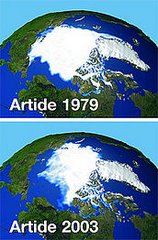 PREMISE
PREMISELike other large whales, the Humpback was and is a target for the whaling industry.
Due to over-hunting its population fell by an estimated 90% before a whaling moratorium was introduced in 1966.
Stocks of the species have since partially recovered; however, entanglement in fishing gear, collisions with ships, and noise pollution also remain concerns.
There are at least 70,000 humpback whales worldwide.
Once hunted to the brink of extinction, Humpbacks are now sought out by whale-watchers, particularly off parts of Australia and the United States.
From Greenpeace:
The Japanese government has confirmed a rumour first reported at the Greenpeace weblog, that they have abandoned plans to kill humpback whales in the Southern Ocean this season.
That no humpback whales will be hunted down and killed in the Southern Ocean Whale Sanctuary is good news indeed, and a victory for Greenpeace supporters the world over who have joined with us in demanding acction from their governments, participated in promoting non-lethal alternatives to whale research through our Great Whale Trail, and questioned the Japanese government directly about plans to expand the whale hunt thourhg the building of a new whaling ship.
But even better news would be that no fin whales or minke whales are to be slaughtered either.
That not a single harpoon will breach the Whale Sanctuary at all is the news that the world is waiting for. But whaling has not ended.

Japan still plans to kill fin and minke whales this year. Saving one species is not enough. We all need to do more NOW to stop the hunt forever.
Scandal: the entire so-called scientific whaling programme is a two decades old scandal, and by backing down today on the humpback hunt, Japan has acknowledged that it fears further scrutiny of a hoax that has nothing to do with science.
Japan has backed down in the face of public outrage over killing the favourite whale of whale-watchers.
Japan has also realised that the humpback whalemeat that would result from the hunt was going to be legally challenged under the Convention on the International Trade in Endangered Species.
The Japanese Fisheries Agency was clearly alarmed at the mounting attention being paid to a "research program" which yields no useful science, and which adds to a stockpile of unsold whalemeat which hardly anyone buys.
They are worried about the attention the humpbacks have drawn to their plans to kill 935 minkes and 50 endangered fins.
But most of all, they are worried about attention being drawn to the plans of a few bureaucrats within Japan who are planning a massive expansion of the whale hunt, by constructing a new whaling factory ship at a cost of some US$125 million to US$188 million, at the expense of Japanese taxpayers.
The future of whaling could well depend upon whether a new factory ship gets built or not.
Greenpeace believes the Japanese taxpayer has a right to ask whether billions of Yen should be invested in this industry -- espectially given that it generates no useful science, adds to a mountain of unsold whalemeat, poses a diplomatic liability to Japan, and in the end profits only a very few bureuatcrats.
For nations that support whale conservation, now is the time to press Japan to abandon the whale hunt entirely, and to stop the build of a new Nisshin Maru.





No comments:
Post a Comment